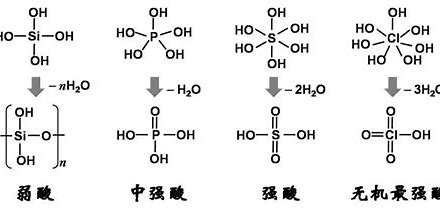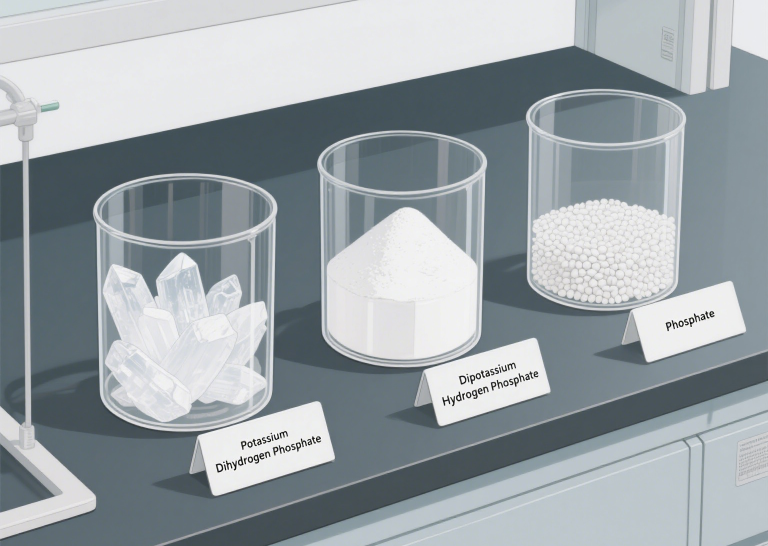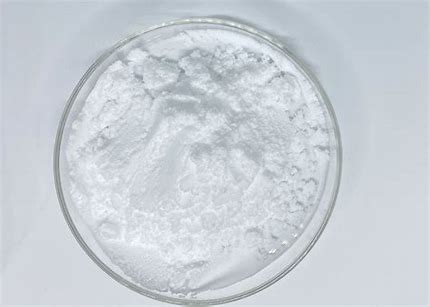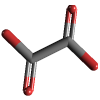Citric Acid: Healthier Use in Food
It’s ubiquitous, yet it often sparks curiosity about its safety and origin. Is citric acid “good” or “bad”? What are its amazing uses? How does it differ from lemon juice? And is it true that some link it to black mold?
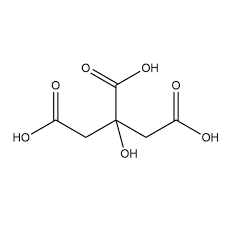
| Item | Details |
|---|---|
| Chemical Formula | C₆H₈O₇ |
| Molar Mass | Approximately 192.12 g/mol |
| IUPAC Name | 2-Hydroxypropane-1,2,3-tricarboxylic acid |
| CAS Number | 77-92-9 |
| Appearance | Colorless crystalline powder or transparent crystals |
| Odor | Odorless |
| Taste | Strongly acidic taste |
| Solubility in Water | Highly soluble (about 133 g/100 mL at 20°C) |
| Melting Point | Approximately 153°C (307.4°F) |
| Boiling Point | Decomposes before boiling |
| pH (1% Solution) | Approximately 2.1 |
| Natural Sources | Found in citrus fruits (such as lemons, oranges), pineapples, strawberries, etc. |
| Main Uses | – Used as a food additive (flavoring agent, acidifier, preservative) – Applied in the pharmaceutical industry (for manufacturing drugs, cosmetics, etc.) – Utilized in the chemical industry (as a chelating agent, in the production of detergents, etc.) – Employed in the production of beverages, jams, candies, and other food products – Used in laboratory settings as a reagent and buffer solution |
| Safety Considerations | – Low toxicity, but may cause skin and eye irritation – Ingesting large amounts can stimulate the gastrointestinal tract |
Citric Acid: Good or Bad for You?
For most people, citric acid is safe for consumption and use in moderation and offers numerous benefits.
Benefits of Citric Acid:
- Natural Antioxidant: Citric acid acts as a natural antioxidant by chelating metal ions, which often catalyze oxidation reactions. For instance, spraying a small amount of lemon water (containing citric acid) on cut apples or avocados can significantly slow down their browning process because citric acid prevents polyphenol oxidase from reacting with oxygen in the air.
- Enhances Mineral Absorption: Citric acid can form soluble chelates with minerals like calcium, magnesium, zinc, and iron (e.g., calcium citrate, magnesium citrate). These chelates are more easily absorbed by the small intestine than their original mineral salts.
- Kidney Stone Prevention: Citric acid, especially in the form of potassium citrate, is widely used to prevent and treat calcium oxalate kidney stones. It works through two main mechanisms: first, citric acid increases urine pH (making it more alkaline), which reduces the saturation of calcium oxalate and uric acid; second, citrate ions themselves can bind to calcium ions in the urine, forming soluble complexes that reduce the opportunity for free calcium ions to combine with oxalate to form insoluble stones. Doctors often advise kidney stone patients to increase lemon water intake, precisely leveraging this property of citric acid.
- Skin Health Benefits: As an alpha-hydroxy acid (AHA), citric acid has a mild exfoliating effect in skincare products.
Potential Concerns and Risks:
- Dental Erosion: Due to its acidic nature, high concentrations of citric acid or frequent exposure to foods and beverages containing it can gradually erode tooth enamel, increasing the risk of cavities. However, this is primarily related to the frequency and duration of consumption, not citric acid itself.
- Digestive Discomfort: For some sensitive individuals, particularly those with gastroesophageal reflux disease (GERD) or irritable bowel syndrome (IBS), excessive intake of citric acid might cause stomach upset, acid reflux, or gastrointestinal irritation.
- Allergic Reactions (Rare Cases): While rare, a very small number of individuals might experience allergic reactions to citric acid (especially industrially produced citric acid) or compounds that might remain from its production process (e.g., mold residues), leading to symptoms like skin itching, rashes, or difficulty breathing.
Overall, for most healthy individuals, citric acid used in daily diets and products is safe. The key lies in moderation and a diverse eating habit.
The Wide-Ranging Uses of Citric Acid: Beyond Your Imagination!
Due to its unique chemical properties, citric acid plays an indispensable role in various industries:
- Food and Beverage Industry: This is one of the primary uses of citric acid.
- Flavoring Agent: Imparts a sour and refreshing taste to beverages (like sodas, juices), candies, jams, and dairy products (like yogurt, cheese). For example, in many carbonated drinks, the addition level of citric acid typically ranges from 0.1% to 0.5% to provide just the right acidity and crispness.
- Preservative: By lowering pH, it inhibits the growth of bacteria, molds, and yeasts, thereby extending the shelf life of foods, such as in canned goods, meat marinades, and baked products. In canned tomatoes, to prevent the growth of Clostridium botulinum and maintain flavor, citric acid may be added at levels up to 0.2% to 0.4%. In jams or jellies, its addition might be between 0.5% and 1.0% to provide tartness and act as a gelling aid.
- Antioxidant: Prevents food from oxidizing and discoloring, maintaining freshness, used in fruit slices or processed meats.
- Pharmaceuticals and Dietary Supplements:
- Mineral Absorption Enhancer: Increases the absorption efficiency of minerals like calcium, magnesium, and zinc, widely used in various mineral supplements.
- Kidney Stone Treatment: As potassium citrate, it’s used for the prevention and treatment of calcium oxalate kidney stones.
- Pharmaceutical Excipient: Used in some medications as a pH adjuster, stabilizer, or effervescent agent.
- Cosmetics and Personal Care Products:
- pH Adjuster: Used in shampoos, conditioners, body washes, soaps, etc., to balance the pH, making them more suitable for skin and hair.
- Preservative: Extends the shelf life of cosmetic products.
- Cleaning Products and Industrial Applications:
- Descaler: Citric acid is an effective chelating agent that dissolves limescale (calcium carbonate), widely used in kettles, coffee makers, bathroom cleaners, and laundry detergents.
- Water Softener: Acts as a water softener in laundry detergents and dishwashing liquids, improving cleaning efficacy.
- Rust Remover: Can be used to remove rust.
- Industrial Cleaning: Used for cleaning equipment like boilers and cooling towers.
Is Citric Acid Black Mold? A Deeper Look into Its Production Process
This is a common misconception, and the answer is: citric acid is not black mold itself.
Specifically, the production process is as follows:
- Raw Material Preparation: Corn starch, molasses, or other sugars are used as the culture medium.
- Fungal Fermentation: Selected and improved strains of Aspergillus niger are inoculated into the culture medium. Under suitable temperature and pH conditions, Aspergillus niger consumes the sugars and produces large quantities of citric acid through its metabolic pathways.
- Extraction and Purification: After fermentation, a series of complex processes, including filtration, precipitation, and crystallization.
Therefore, citric acid is a metabolic product of Aspergillus niger, not the mold itself. The finished citric acid undergoes stringent purification and typically does not contain mold components. However, for a very small number of individuals who are highly sensitive to mold or have a history of mold allergies, there is a theoretical possibility that minute mold residues or their metabolic byproducts in industrial citric acid could trigger an allergic reaction, though this is exceedingly rare.

Citric Acid vs. Lemon Juice: The Same or Different?
Citric acid and lemon juice are related but distinct concepts.
- Lemon Juice: Lemon juice is the liquid extracted from pressing fresh lemons. It is a complex mixture. Besides being rich in citric acid (which is its primary source of tartness), lemon juice also contains:
- Water
- Vitamin C (ascorbic acid)
- Small amounts of minerals (e.g., potassium)
- Dietary fiber
- Natural sugars
- Volatile aromatic compounds (giving lemons their characteristic aroma and flavor)
- Citric Acid: Citric acid refers specifically to a pure chemical substance with the molecular formula C6H8O7. It typically exists as a white crystalline powder and does not contain the other natural components found in lemon juice (such as vitamins, minerals, fiber, and aromatic substances).
Summary of Key Differences:
| Characteristic | Citric Acid (Pure Chemical) | Lemon Juice (Natural Extract) |
|---|---|---|
| Composition | Single chemical substance | Complex mixture (water, sugar, Vit C, minerals, etc.) |
| Flavor | Purely sour/tart taste | Rich lemon flavor and aroma, balanced sweet-sour |
| Form | Typically white crystalline powder | Liquid |
| Nutrition | Virtually no nutritional value (except for mineral absorption enhancement) | Rich in Vitamin C, minerals, etc. |
| Source | Industrial fermentation (majority) or minor natural extraction | Directly squeezed from lemon fruit |
China and chemical raw material suppliers, welcome to inquire,Contact us:https://www.yuhanchemi.com/contact


